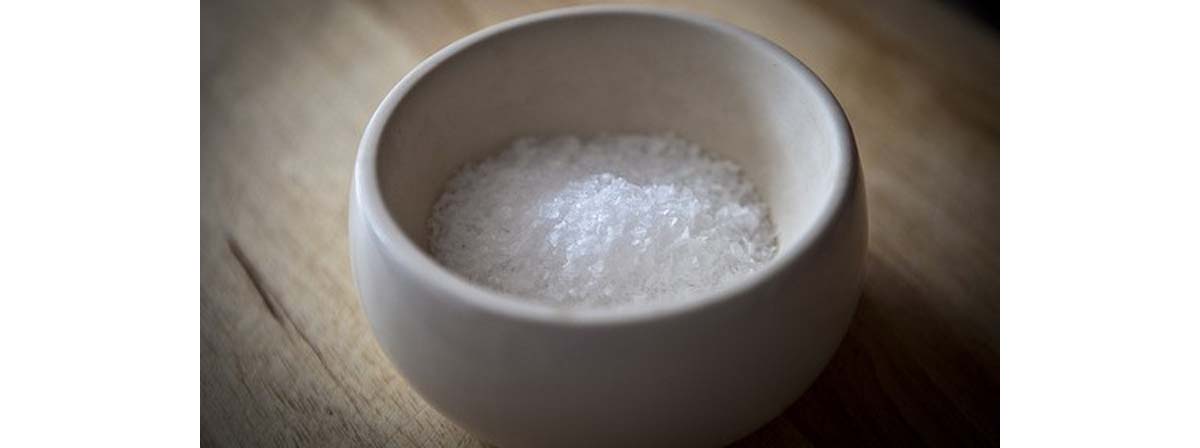One of the standard dietary recommendations seems to be that we should all curb our salt intake. We are advised not to add salt to our food — whether at the table or when cooking — and to avoid salty foods and snacks like potato chips, salted nuts, and processed food. We have been told, over and over again, that too much salt in our diet leads to high blood pressure with an associated risk of heart disease and strokes, as well as that it is bad for our kidneys.
Scientific evidence tells a different story, though, and lowering your salt intake too much could pose a whole other kind of threat to your health. What do you need to know?

Restrictions on salt intake
Current recommendations from the American Heart Association, the US Department of Agriculture and the US Department of Health and Human Services, advise restricting daily salt intake to 2,300 mg per day in the general population. And for particular groups — anyone over 50, African Americans, people with high blood pressure, diabetes or chronic kidney disease, the level is set at 1,500 mg per day. This amounts to little more than half a teaspoon a day.
Despite the recommendations, the average salt intake in America and other parts of the world is 3,400mg per day and many people are concerned about their salt consumption.
What does the report say?
The institute of Medicine was commissioned by the Centers for Disease Control and Prevention to assess the validity of the data on which these recommendations about salt intake were based. (Ironically it was the Institute’s evaluation of the data in 2005 which led to the current recommendations on salt intake).
In their latest review, the Institute's research staff were unable to support the current recommendations as they found that the evidence on which they are based fails to prove that consuming more than 1500 mg of salt a day will have harmful effects on health.
Why the change of opinion?
The Institute discovered a number of issues which made them question the validity of the current recommendations. One was that the original advice was based on the assumption that high blood pressure as a result of excessive salt consumption causes heart attacks and strokes. This is termed using high blood pressure as a ‘marker’ for these adverse events.
But reanalysis of the data failed to support this assumption.
For example in some of the studies the risk of heart disease continued to fall with reduced salt intake, even when blood pressure stayed the same. This may indicate that the positive effects seen in the study subjects were being brought about by some other change in diet and was not due to lowering of blood pressure.
Worryingly there was also some evidence of low salt intake being associated with higher risk of heart attack and death.
Also, it is very difficult to accurately measure a person’s salt intake as much of it is invisible — that is to say, the salt we eat isn't only the salt that we sprinkle on our food. Salt is naturally "hidden" in many foods, and many of us never consider those sources of salt. Many of the studies relied on participants reporting their salt intake.
How did the initial recommendations come about then?
For many dietary constituents, the minimum daily amounts needed to safeguard health — known as Recommended Daily Allowances (RDAs) — have been calculated. But in the case of salt there was inadequate evidence to set an RDA so an Adequate Intake (AI) level of 1500 mg was given instead. This was the minimum amount of salt needed for a healthy diet.

From knowledge of how much salt is needed to raise blood pressure, the maximum amount before blood pressure was high enough to do harm was calculated as being 2,300 mg. But as already mentioned, this assumes that any increase in blood pressure caused by consuming more salt, alsi results in a much higher risk of heart disease or stroke – and evidence to this effect is currently lacking.
Have recommendations changed in light of this new report?
Not in everyone’s opinion. For example the American Heart Association still stands by the original recommendations.
Dr Strom who chaired the Institute committee which came up with the new report also advises that people should not eat too much salt, but added that there just is not enough evidence to be able to set a figure on what ‘too much’ is.
Some of the studies seem to indicate that there may be safe upper and lower limits. For example in one very large (over 28,000 participants) study of people with high blood pressure, the risk of heart attacks, heart failure, stroke and death from heart disease increased at both the upper and lower reaches of salt intake. But in this case the upper end of salt consumption was more than 7,000mg (more than twice the currently recommended limit). But worryingly the lower end was less than 3,000mg – the current target for people with high blood pressure is 1,500mg.
And while excessive salt might be bad for us, we cannot survive on too low an intake. It is the sodium in salt which is the critical ingredient and if sodium levels fall too low – a condition called hyponatremia – seizures, coma and death can result.
How should I interpret the new report?
As mentioned, it is very difficult and inexact to measure personal daily salt intake in any case. As with all things, the best advice is probably to take it in moderation.
The Institute committee felt that the conflicting results seen in studies might indicate that there is variation in sensitivity to the effects of salt between individuals. While this makes unraveling the effect of salt on health harder, it may also indicate that we may all have a different ‘safe’ range.
So if you already have high blood pressure it might make sense to be aware of your salt intake and try to reduce it moderately. Many foods contain information on the amount of salt they contain. For other common foods see the link below for US government information where you can look up salt content either from an alphabetical list of foods, or from a descending list by weight of salt.
- www.books.nap.edu/openbook.php?record_id=18311&page=95
- www.nytimes.com/2013/05/15/health/panel-finds-no-benefit-in-sharply-restricting-sodium.html?pagewanted=1&_r=1
- Photo courtesy of Ian Sane by Flickr : www.flickr.com/photos/31246066@N04/8711043595/
- Photo courtesy of Darryl by Flickr : www.flickr.com/photos/blackmango/6061750502/
- www.ars.usda.gov/Services/docs.htm?docid=22769 (US Government information on salt content of common foods)


Your thoughts on this